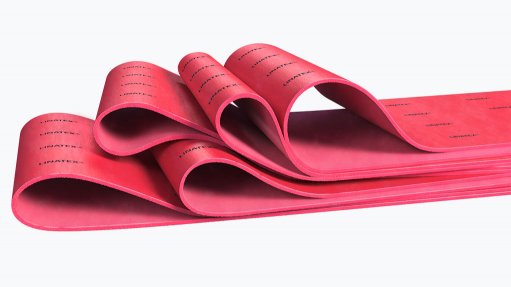Australian gold output falls amid volatile gold prices
Australian gold production dipped slightly in the September quarter of 2024, with output falling to 73 t, according to Melbourne-based consultants Surbiton Associates.
This represents a decrease of 2 t compared to the previous quarter’s 75 t and is valued at about A$8.6-billion, based on the average gold price for the period.
Gold prices surged in September, with the US dollar price rising from $2 499/oz (A$3 693) at the beginning of the month to $2 630/oz (A$3 794) by month’s end. The spot price continued its climb, peaking at $2 790/oz (A$4 257) by late October. However, this volatility, exacerbated by currency fluctuations, had mixed effects on production levels.
Surbiton Associates director Dr Sandra Close explains that the fluctuations in the Australian dollar are just as critical as the US dollar price of gold.
“In Australia, it is not only the US dollar price that is important but also the US$:A$ exchange rate,” she noted. “This adds to the volatility of the gold price in Australian dollar terms.”
By October’s close, the US dollar price was being driven by several factors, including declining interest rates in the US and other major economies. There was also growing interest in gold from private investors, superannuation funds, and increased flows into exchange-traded funds. Additionally, central banks in countries such as Russia, Turkey, Poland, and India reduced their holdings of US dollars and shifted towards gold.
However, the People’s Bank of China, previously one of the largest buyers, had not reported any further purchases since April 2024.
Despite the price spike, Close noted that the gold price saw a correction following the Republican Party’s victory in the US elections in early November, with Donald Trump being voted in as President. By the end of November, the gold price had fallen to around $2 660/oz (A$4 085) on a spot basis.
“The wild swings in gold prices over the last few months show that a degree of hedging provides some insurance against sudden price changes, especially for locally listed producers,” Close observed. “This can be achieved through the sensible purchase of gold put options which give the purchaser the right, but not the obligation, to sell their gold at an agreed price.”
Gold put options allow producers to lock in a minimum selling price for their gold. If the market price is higher than the agreed price, producers can sell in the open market and let the option expire. If the market price falls below the agreed price, the producer can exercise the put option and sell at the higher price.
Some reports from ASX-listed companies for the September quarter suggest that the tonnage of ore treated at certain operations exceeded the amount actually mined. This could indicate that lower-grade stockpiled material was blended into the mill feed to make use of the higher gold prices.
“At the risk of sounding repetitive, it is no surprise that gold production may fall when prices are high. Treating some lower-grade stockpiled ore results in fewer ounces being produced, with a consequent rise in the cost per ounce of production. However, this is a sensible and rational means of optimising life-of-mine and profitability,” said Close.
A notable example of this strategy was Northern Star Resources’ Super Pit operation in Kalgoorlie, Western Australia, where the treatment plant processed about 600 000 t more ore than was mined during the quarter. This suggests that the operation took advantage of the higher gold prices to treat lower-grade stockpiles, leading to a reduction in output by 27 000 oz and a decline in the head grade from 1.5 g/t to 1.3 g/t.
Similarly, Newmont’s Boddington mine, Australia’s largest gold operation, followed a comparable approach. In the September quarter, the mine processed 8.4-million tonnes of ore, despite only mining 6.3-million tonnes. The difference of 2.1-million tonnes likely came from stockpiled material. The mine’s grade decreased by about 5%, resulting in a production drop of about 10 000 oz.
Some analysts and industry commentators have interpreted the reduced production and higher costs per ounce as signs of operational trouble or mismanagement. However, Close argued that such interpretations are overly simplistic.
“There is another rather more obvious explanation,” she said. “Using lower-grade stockpiles to optimise production costs and extend mine life is a rational decision that many operators make when faced with high gold prices.”
While production may have fallen, the strategy of blending lower-grade ore into the feed helps gold producers preserve cash flow and manage costs during periods of price volatility. This approach allows companies to maximise returns over the longer term and enhance the profitability of their operations.
Comments
Press Office
Announcements
What's On
Subscribe to improve your user experience...
Option 1 (equivalent of R125 a month):
Receive a weekly copy of Creamer Media's Engineering News & Mining Weekly magazine
(print copy for those in South Africa and e-magazine for those outside of South Africa)
Receive daily email newsletters
Access to full search results
Access archive of magazine back copies
Access to Projects in Progress
Access to ONE Research Report of your choice in PDF format
Option 2 (equivalent of R375 a month):
All benefits from Option 1
PLUS
Access to Creamer Media's Research Channel Africa for ALL Research Reports, in PDF format, on various industrial and mining sectors
including Electricity; Water; Energy Transition; Hydrogen; Roads, Rail and Ports; Coal; Gold; Platinum; Battery Metals; etc.
Already a subscriber?
Forgotten your password?
Receive weekly copy of Creamer Media's Engineering News & Mining Weekly magazine (print copy for those in South Africa and e-magazine for those outside of South Africa)
➕
Recieve daily email newsletters
➕
Access to full search results
➕
Access archive of magazine back copies
➕
Access to Projects in Progress
➕
Access to ONE Research Report of your choice in PDF format
RESEARCH CHANNEL AFRICA
R4500 (equivalent of R375 a month)
SUBSCRIBEAll benefits from Option 1
➕
Access to Creamer Media's Research Channel Africa for ALL Research Reports on various industrial and mining sectors, in PDF format, including on:
Electricity
➕
Water
➕
Energy Transition
➕
Hydrogen
➕
Roads, Rail and Ports
➕
Coal
➕
Gold
➕
Platinum
➕
Battery Metals
➕
etc.
Receive all benefits from Option 1 or Option 2 delivered to numerous people at your company
➕
Multiple User names and Passwords for simultaneous log-ins
➕
Intranet integration access to all in your organisation



















